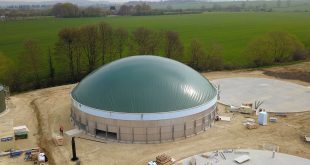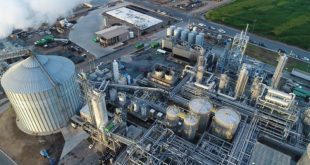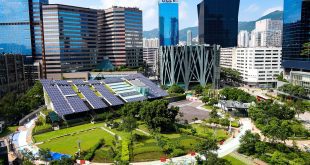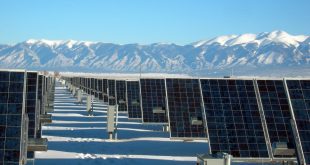Development is essential to meet the needs of current and future generations. However, not all development is created equal. Many people have a growing concern that much of the design and development in the world has an outsized impact on the health of the planet. Some of these same people are working toward developing and implementing more sustainable alternatives.
Fortunately, some of these sustainable development ideas are really beginning to take off. Many of them are popular because they are more than just sustainable. They are sleek and hip. And many of these sustainable designs incorporate new technologies that make them easier and cheaper to use than the standard methods.
Our society is reaching a tipping point where changes are needed in order to sustain ourselves into the future. Here are some of the biggest trends in sustainable development that are working to help us get there.
1. Energy-efficient Gadgets
For sustainability-minded consumers, perhaps one of the biggest trends in sustainable development is tightly associated with the technology in their pockets. New technologies are enabling people to control things like the temperature of their homes, the intensity of the lighting, or the amount of water the yard is getting on their smartphones.
It may not seem like much, but this development actually has the potential to save a lot of energy and water, ultimately working to make the environment a little cleaner, our homes a little bit more energy efficient, and our wallets a little more full. For instance, a smart thermostat reduces energy use for heating by an average of 9% per household.
2. Cleaner Building Materials
This sustainable development trend is a bit bigger than the gadgets that are being used to make homes more energy efficient. Rather, it is the homes themselves that are becoming more sustainable. Part of this is an adaptation to climate change.
Some construction companies are aiming to address the concern head-on by incorporating more environmentally friendly building materials and strategies into their business. For example, some may promote smaller homes as a more environmentally friendly option. Others may utilize more sustainable materials such as:
- Reclaimed lumber;
- Recycled plastics;
- Natural bamboo or cork;
- Organic paints;
- Concrete alternatives.
Climate change costs the construction industry nearly $4 billion in losses due to weather-related delays. These are anticipated to get worse as the climate continues to change. Companies are doing what they can to offset the adverse effects at least caused by their own industry.
3. Renewable Energy
Although it feels like a long time coming, our energy system is starting to change to encompass a greater diversity of energy sources. Many of these new energy sources that are coming online are renewable, which is a huge boon for advocates of sustainable development. Renewable energy sources are less likely to have direct negative impacts on the environment and may ultimately help the world become more energy secure and self-sufficient.
Power grid transformations are an essential step in the process. New technologies such as smart transformers can be an important step in making these changes happen. Much in the same way that home gadgets allow consumers to be more sustainable with the touch of a button, smart transformers can be virtually monitored and use cooling systems and sensors to reduce the risk of failures.
4. Electric Vehicles
Unsurprisingly, another major trend in sustainable development is the infrastructure to support electric vehicles. Recent economic packages in the United States are creating incentives for people to make the conversion to electric or hybrid vehicles that are less reliant on fossil fuels. Electric vehicle tax credits are just the tip of the iceberg. It is estimated that making the switch will be an essential component of helping the country meet its sustainability goals in the future.
Developing the infrastructure to support the conversion to electric vehicles is a crucial factor in making the switch. Though there are plenty of challenges, especially in more rural areas, efforts are being made to improve the distribution of charging stations. Likewise, developers are striving to create technologies that extend the travel distance of the vehicles between charges.
5. Company Accountability
Finally, one of the most significant developments in the world of sustainability lies within corporations. Many consumers are demanding significant changes from the companies that produce the products they buy. Consumers want clear information on the environmental impacts of their products and expect companies to provide more sustainable products at a similar price point. This demand is having real-world impacts and encouraging companies to take a much harder look at the sourcing for their products. Ultimately, this is set to have a big impact on the development of a more sustainable economy.
Regulators are also stepping in to help consumers in this regard. Many companies are now voluntarily reporting their environmental footprint to consumers. Others will be required in the near future. Again, this change is set to help consumers make more informed decisions on what products they actually want to purchase based on the sustainability index and environmental impact. These regulatory changes are likely to have a real impact on pushing the world in a more sustainable direction.
Conclusion
Sustainable development comes in all forms. Initiatives that aim to decrease the environmental impact of development are becoming more and more mainstream. As these technologies and tools come online, we all get one step closer to becoming a more sustainable society overall.
 Alternative Energy HQ solar power for homes, wind energy, and bio fuel issues
Alternative Energy HQ solar power for homes, wind energy, and bio fuel issues









2 comments
Pingback: Top 5 Trends in Sustainable Development
Pingback: Top 5 Trends in Sustainable Development